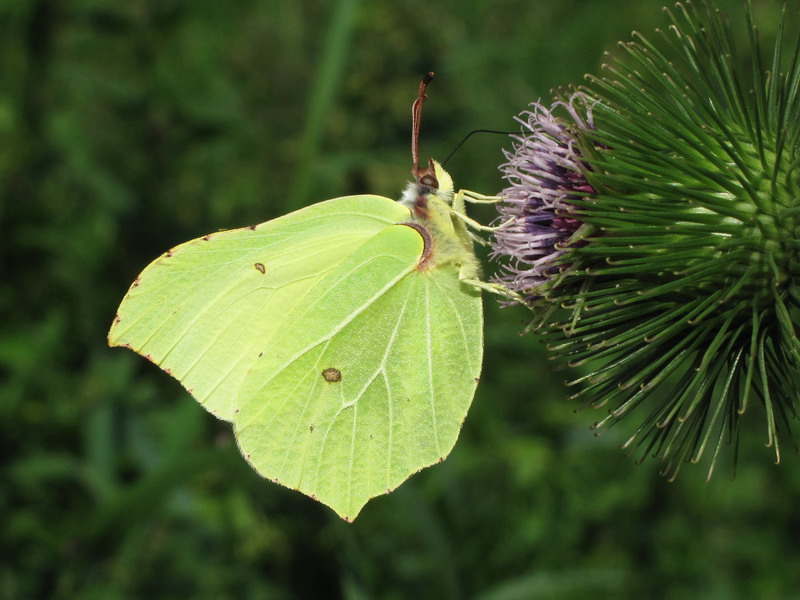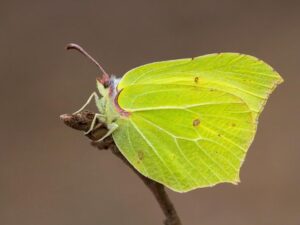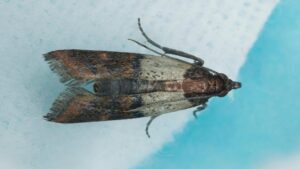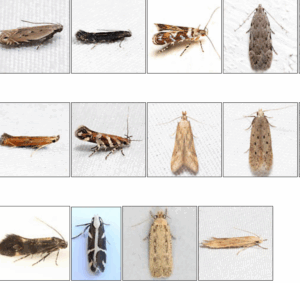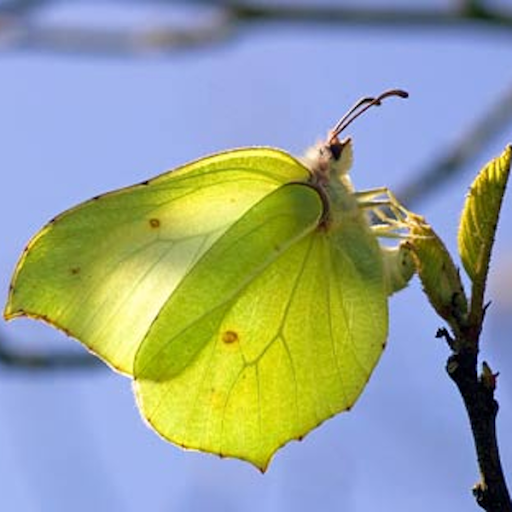
How rare is a brimstone butterfly?
The brimstone is a fairly large, pale yellow butterfly, with distinctive, leaf-shaped wings. Adults hibernate through cold weather, so may be seen flying on warm days throughout the year, although they are most common in the spring. Usually seen in ones or twos, they are never very common, but are widespread.
What is the lifespan of a common brimstone?
The brimstone is long-lived compared to other butterflies: it can live for up to a year in its adult form.
What is the yellow butterfly in spring?
For many people, it is the warm, yellow glow of a male Brimstone butterfly in flight that really signals that spring has sprung and that the new year’s bounty of butterflies is on its way.
Gonepteryx rhamni, commonly named the common brimstone, is a butterfly of the family Pieridae. It lives throughout the Palearctic zone and is commonly found across Europe, Asia, and North Africa. Across much of its range, it is the only species of its genus, and is therefore simply known locally as the brimstone. Its wing span size is 60–74 mm (2.4–2.9 in). It should not be confused with the brimstone moth Opisthograptis luteolata.
The brimstone relies on two species of buckthorn plants as host plants for its larvae; this influences its geographic range and distribution, as these plants are commonly found in wetlands.The adult brimstone travels to woodland areas to spend seven months overwintering. In spring when their host plants have developed, they return to the wetlands to breed and lay eggs. Both the larval and adult forms of the common brimstone have protective coloration and behaviour that decreases their chances of being recognised and subsequently preyed upon.
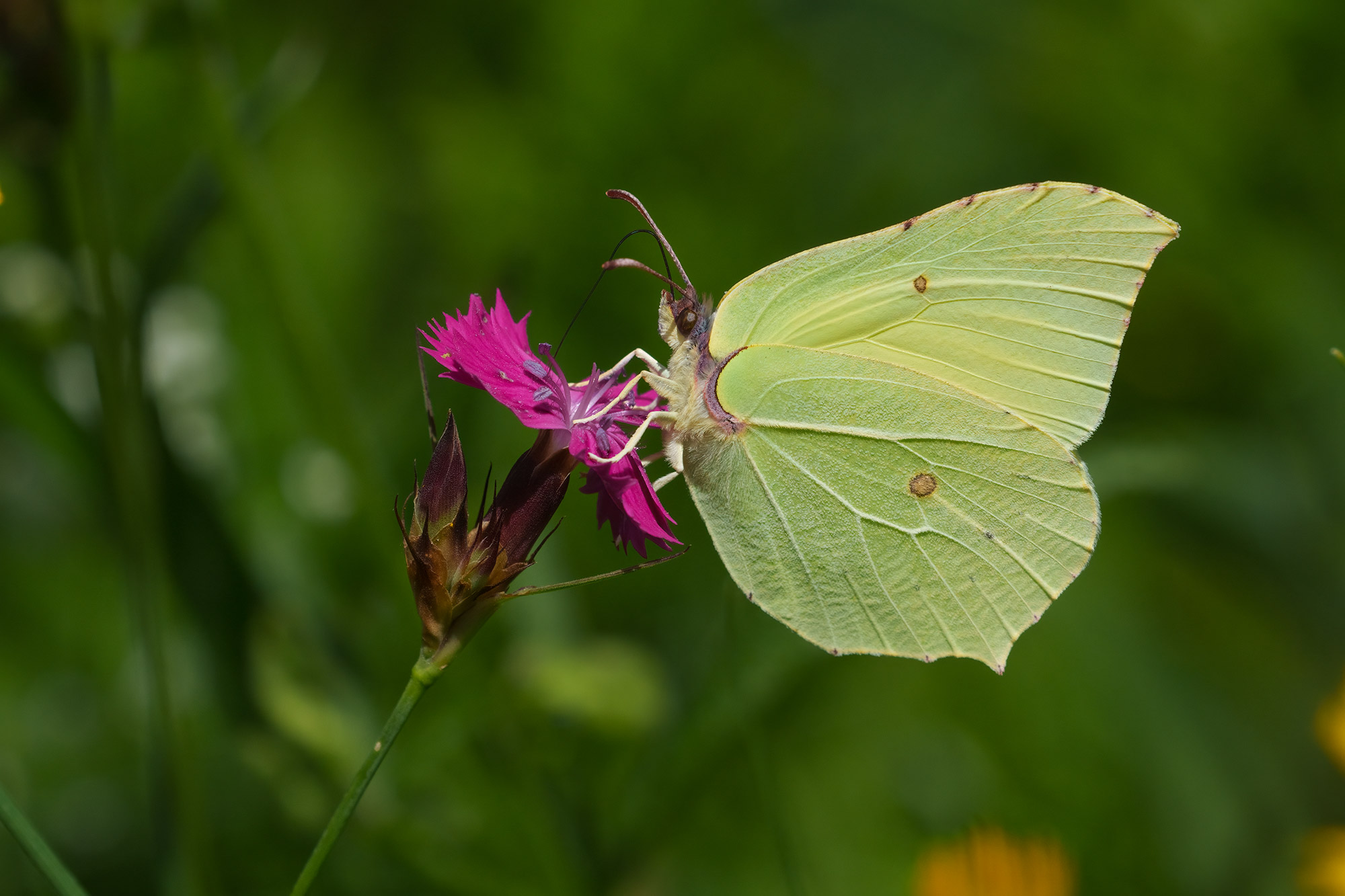
The adult common brimstone has sexual dimorphism in its wing coloration: males have yellow wings and iridescence while females have greenish-white wings and are not iridescent.[6][7] This iridescence is affected by environmental factors.
Size and Family
- Family: Whites and Yellows
- Size: Large
- Wing Span Range (male to female): 60mm
Conservation Status
- Butterfly Conservation Priority: Low
- Europan Status: Not threatened
- Fully protected under the Northern Ireland 1985 Wildlife Order
Where do brimstone butterflies live?
Brimstones have spread in recent years and are now found throughout much of England and Wales. Look for them in gardens or woodlands, particularly early in the year before other butterflies have emerged.
Signs and spotting tips
Brimstone is often cited as one of the first butterflies of the year because adults hibernate over winter in woodlands and emerge on warm spring days. New adults emerge from their chrysalis in July and live for a year. Look for them flitting through gardens and along woodland rides, or spiralling skyward with their partners then tumbling down into the bushes to mate.
Distribution and habitat
The common brimstone can be commonly found throughout the Palearctic. Individuals have been seen from western Europe to east Asia. The high mobility of this butterfly allows it to search widely for new host plant locations and expand its range.While the geographic distribution of the adult is larger than that of its host plant, its range is nevertheless limited by the presence of host plants due to the needs of its larval stage.
The common brimstone uses various environments for different stages of its life cycle. The butterfly inhabits wetlands during mating and breeding season, as they provide ideal areas for oviposition due to an abundance of host plants like the alder buckthorn.The common brimstone prefers laying eggs on younger host plants with late bud-bursts that are isolated from other plants in the area and exposed to both open space and sun.During the winter, adult brimstones travel to woodlands to hibernate, as they provide ideal overwintering sites with shelters such as evergreen foliage and holly.The common brimstone has an appearance that is highly similar to the leaves of these plants, so during hibernation it can remain hidden.In other seasons, habitat selection is also affected by the abundance of nectar as a food source for adult brimstones.
Occurs in scrubby grassland and woodland. The butterfly ranges widely and can often be seen flying along roadside verges and hedgerows.
Life cycle
The common brimstone is one of the longest-living butterflies, with a life expectancy ranging from 10 months to a year.Due to its hibernation and life cycle, it has one generation per year.[10] Development from the laid egg to the emergence of the imago is approximately 50 days. However, the adult brimstone spends a large portion of its life in an overwintering state. The brimstone is highly mobile, feeding and travelling to regions ideal for hibernation during the late summer and fall, and returning to regions ideal for mating and egg-laying during the spring.
How do brimstone butterflies breed?
The brimstone is long-lived compared to other butterflies: it can live for up to a year in its adult form. The adults travel to mate in the spring, and fertilised eggs are laid on the underside of buckthorn leaves.
Once hatched, the caterpillar goes through several instars (development stages) before pupation over the summer. The adults then emerge and feed until early autumn when they begin to hibernate. This is a time when they are completely inactive before emerging to mate in the spring.
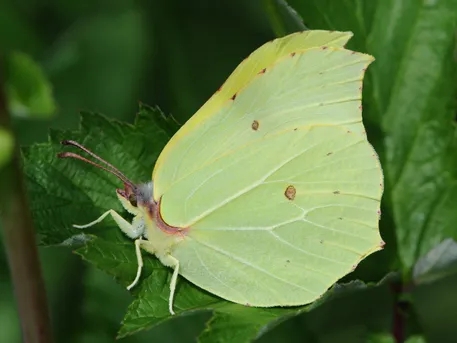
How to identify
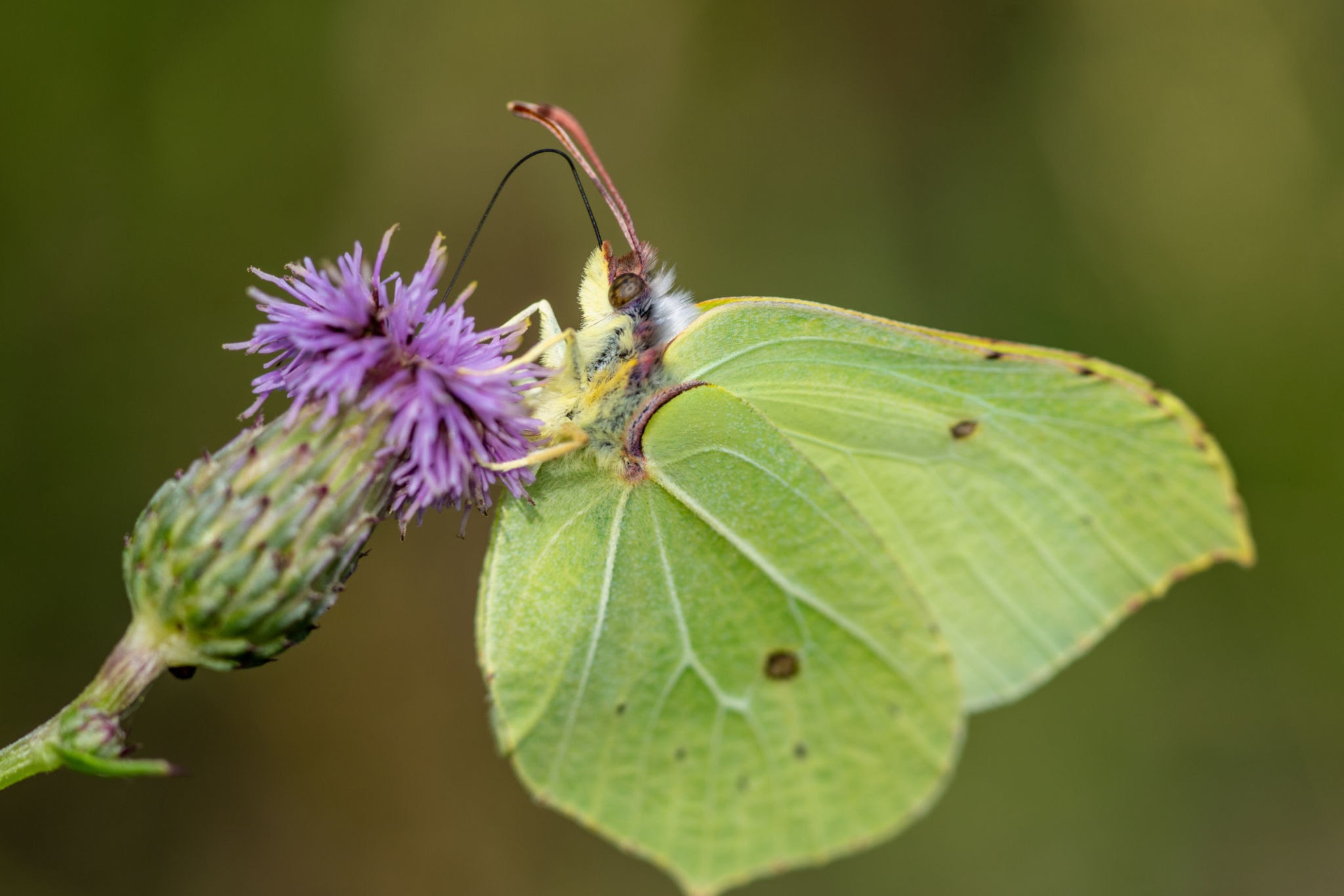
The brimstone is a large butterfly with a greyish body and characteristically veiny and pointed wings. Males are lemon-yellow, while females are greenish-white with orange spots in the middle of each wing. Brimstones rest with their wings closed.

